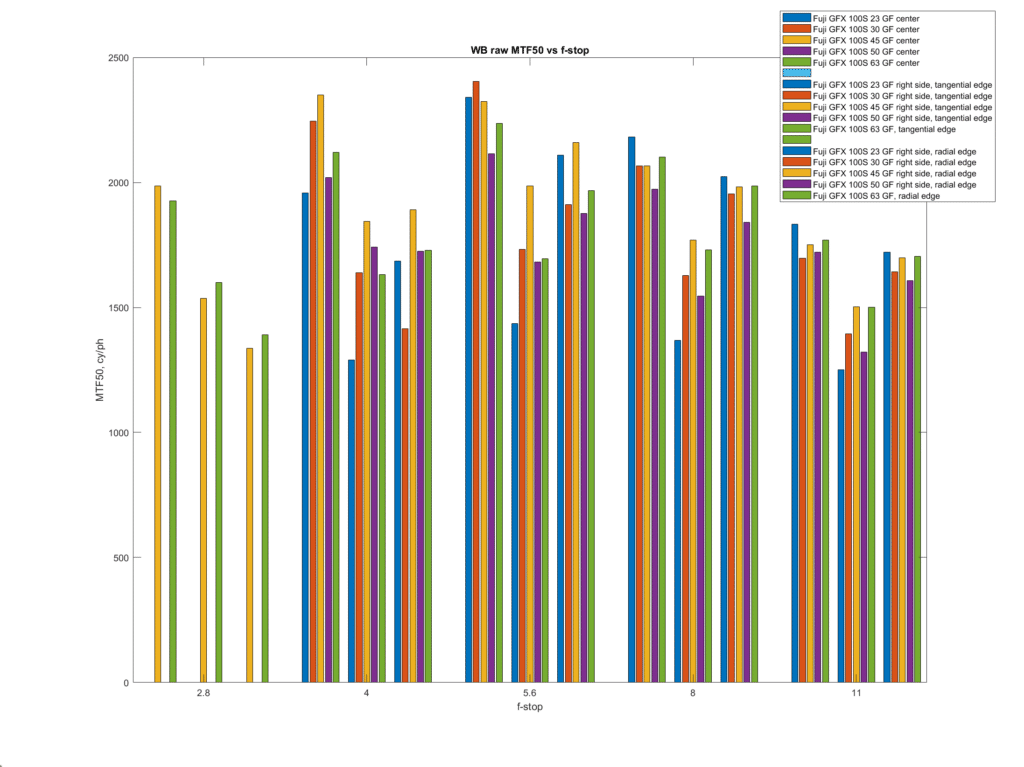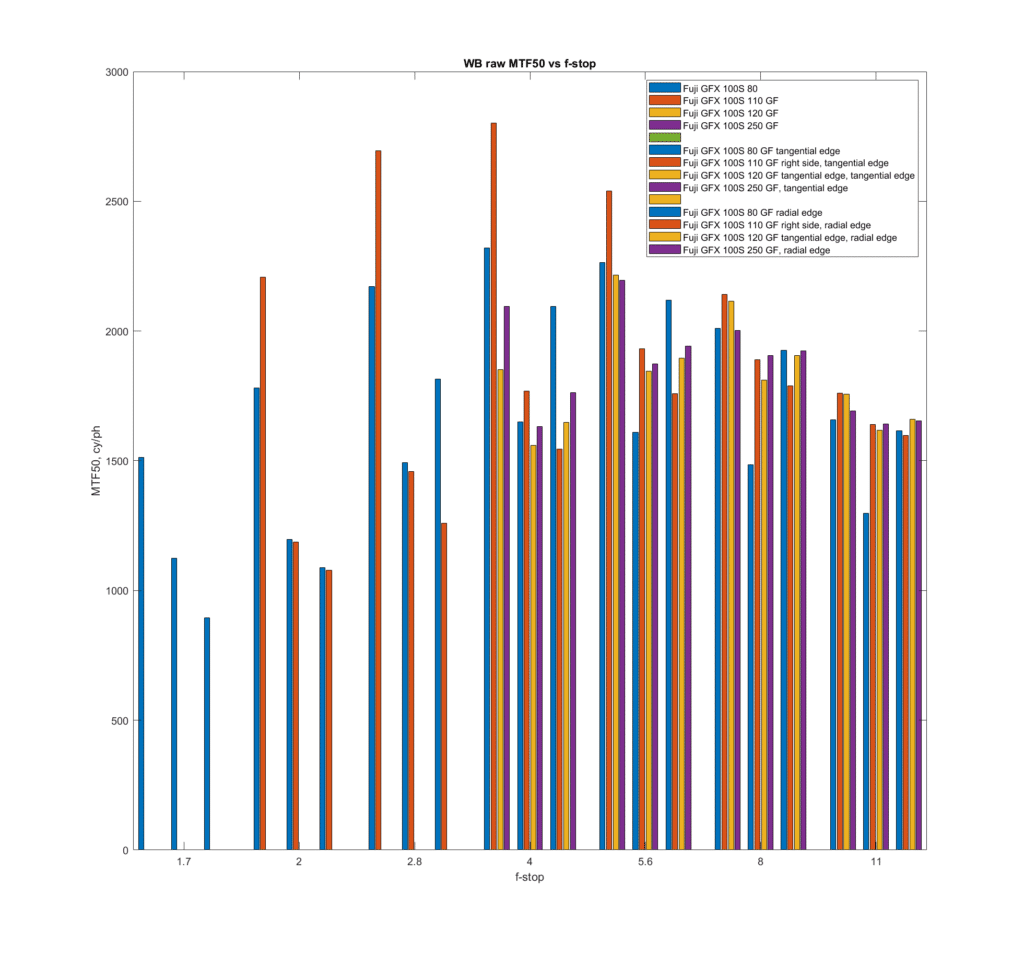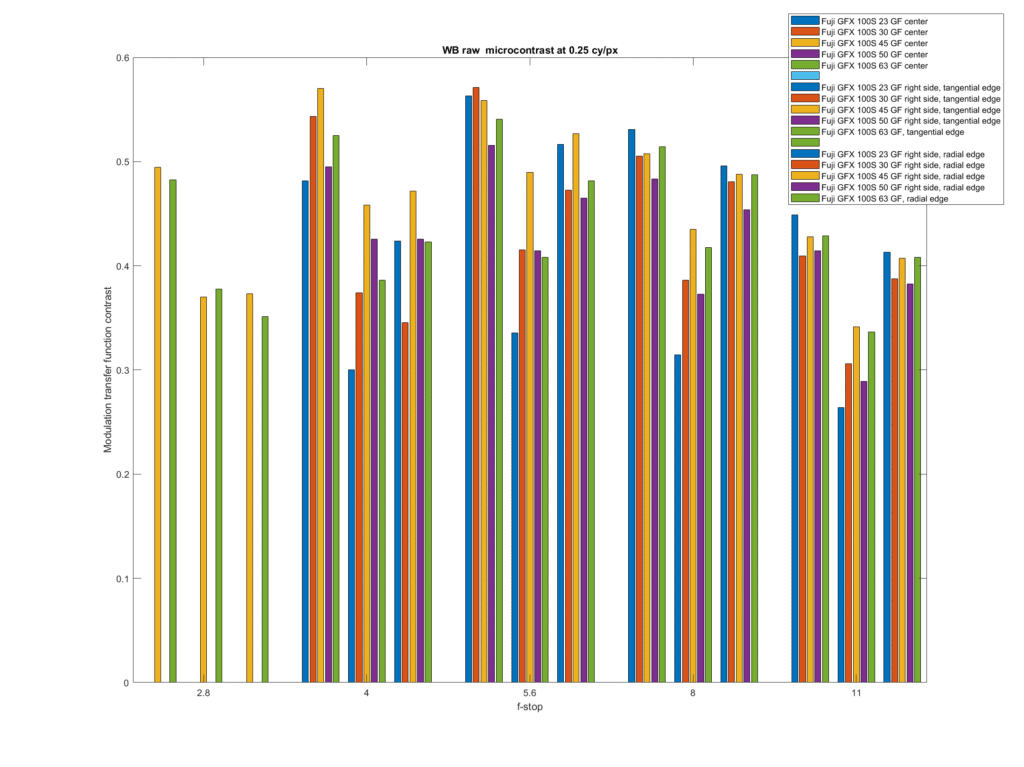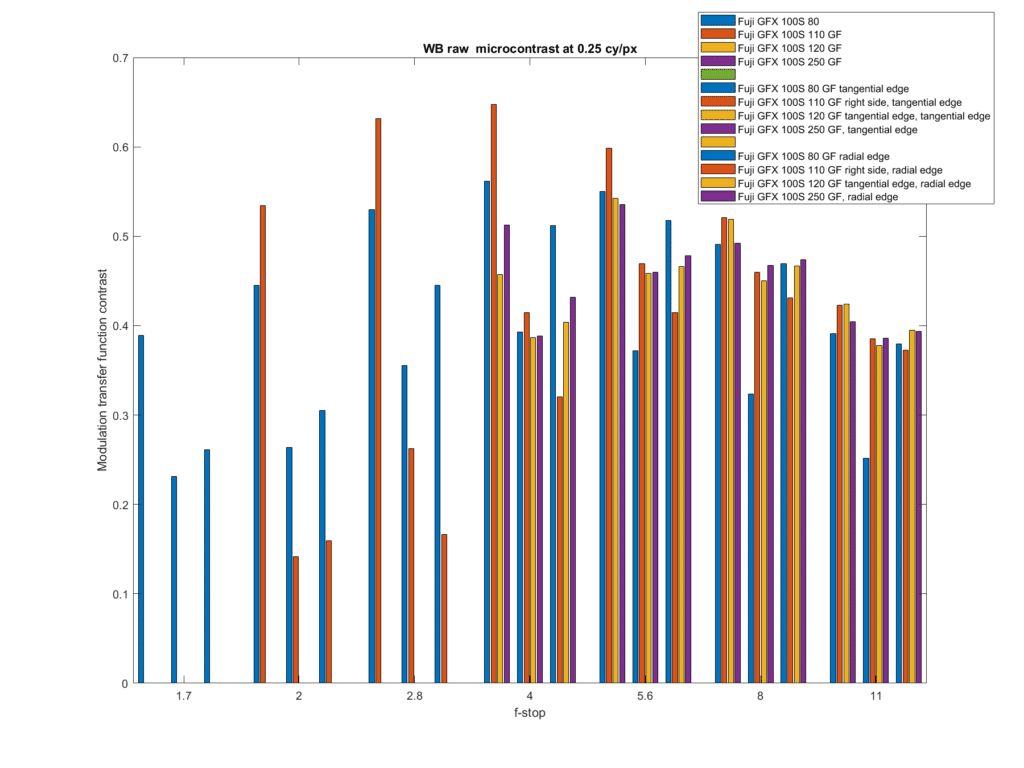This is one in a series of posts on the Fujifilm GFX 100S. You should be able to find all the posts about that camera in the Category List on the right sidebar, below the Articles widget. There’s a drop-down menu there that you can use to get to all the posts in this series; just look for “GFX 100S”. Since it’s more about the lenses than the camera, I’m also tagging it with the other Fuji GFX tags.
In previous posts, I tested the off axis performance of the Fujifilm 110 mm f/2, 80 mm f/1.7 , 250 mm f/4, 63 mm f/2.8, 45 mm f/2.8, 50mm f/3.5, 30mm f/3.5, 23mm f/4, and 120 mm f/4 macro GF lenses on a GFX 100S. I presented summary data in the last two posts. In response to reader feedback, I’ve developed new ways to present that data.
Here’s a sample:
The above plots the MTF50 (the white-balanced raw data) for the shorter GF primes, the 23, 30, 45, 50, and 63. Each is measured in the center and on the right side of the frame (in landscape orientation). The right side measurements are made in two directions: with a radial edge, and with a tangential one. The measurements are grouped by f-stop, and for each stop they are also grouped into three, for the center data, and the two right side data sets. Each lens has a different color. The gaps between the groups are intended to make it easier to compare lenses under the three different conditions.
Here is the same graph for the longer primes:
I’ve done the same thing with microcontrast:
Does that help?




The new layout is more clear to me
Agreed, both the gaps and the identical color for each lens’s field position/orientation makes the charts a lot easier to read.
Hi Jim,
I’m reading your MTF, micro contrast, and LoCa measurements with great interest. Any opportunity to create some graphs containing the data of the 3 zoom lenses aigainst their fix focal point counterparts?
Thanks in advance!
JaapD
I’ll consider that. I have two more zooms to test. THese tests are time consuming, so it may be a while before I get to them.
I can do that, but not for a few weeks.
Thanks a lot Jim, it’s much appreciated!
regards,
Jaap.